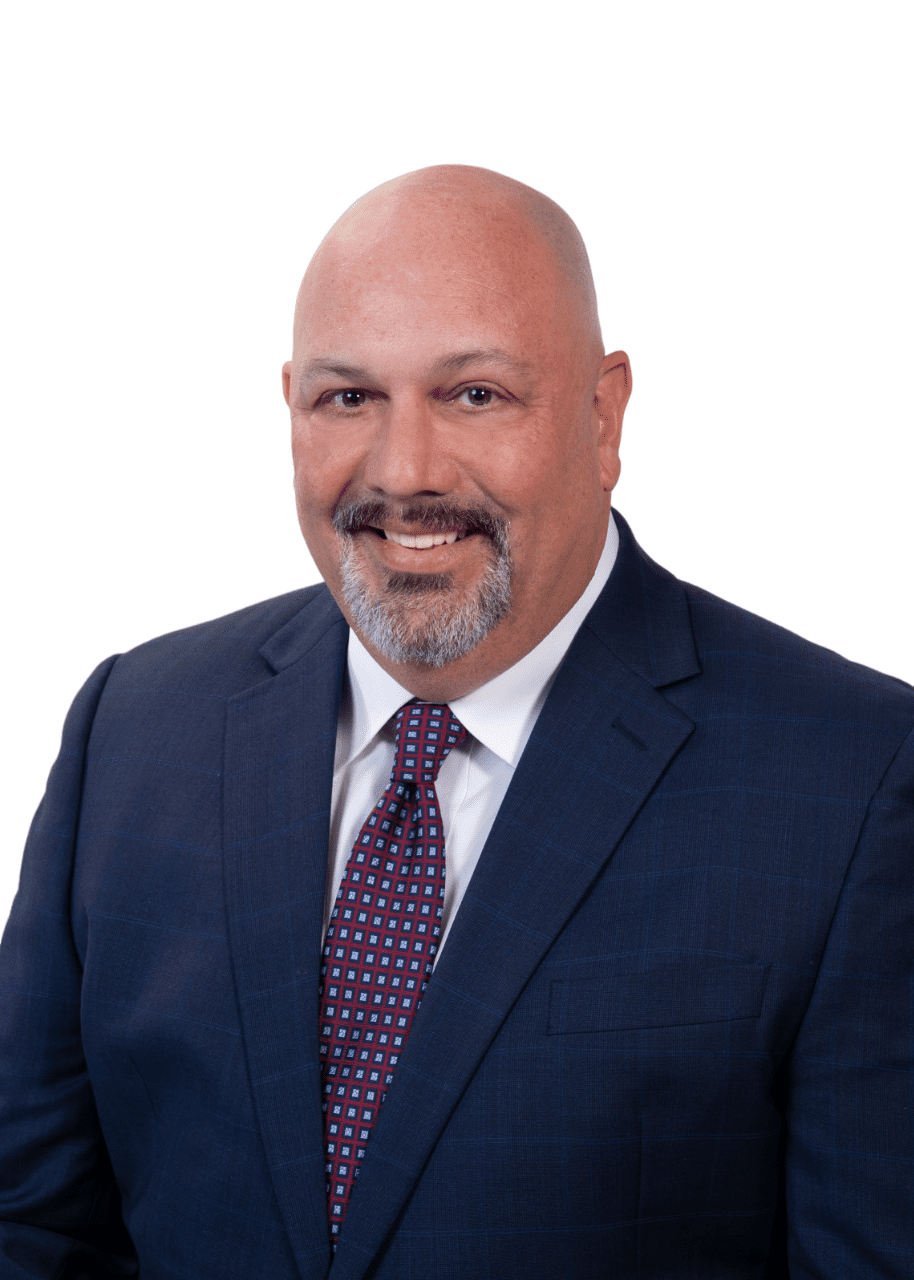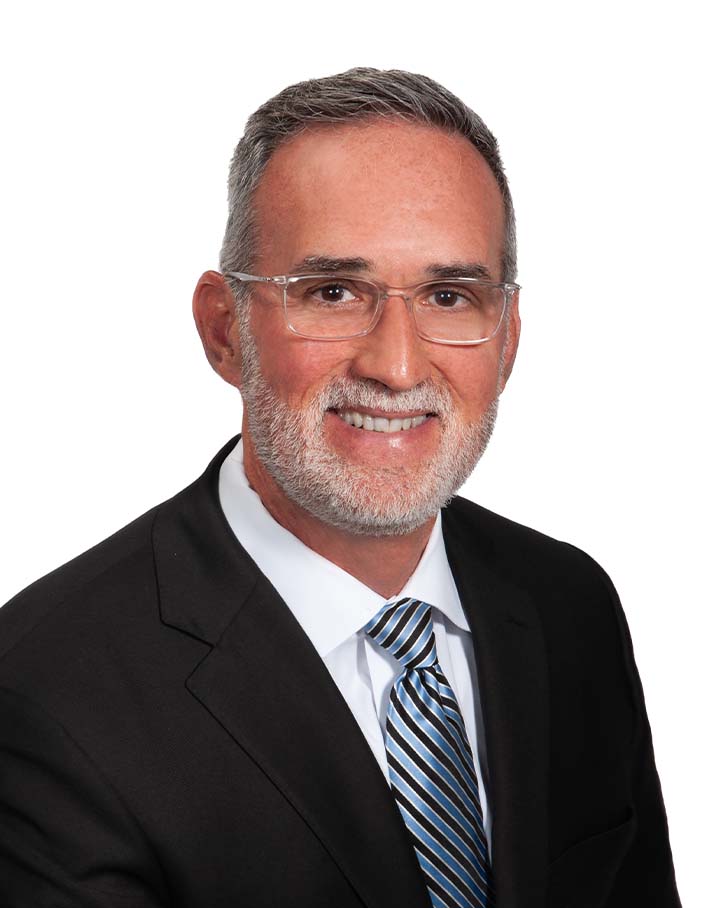Industry Insights: Broker-Dealer Technology Platforms
Exploring Today's Platform Transformations
By Pete Bowman and Dan Garrett
Subscribe to our original industry insights
Broker-Dealer Technology Today
Broker-dealer technology and operating systems are always evolving. In today’s financial services industry, broker-dealers and investment advisors are seeking new revenue streams, efficiencies and a better client experience to gain a competitive advantage. Brokerage firm business models are changing and Fintech (financial technology) continues to offer potential opportunities for growth. The result: wealth management firms and their Chief Technology Officers (CTOs) are finding themselves navigating acquisitions, digital transformations, and regulatory changes.
In this Week’s Oyster Stew podcast our experts discuss:
- Evolving technology platforms
- How broker-dealers and clearing firms are aligning technology roadmaps
- Chief Technology Officer (CTO) challenges as they manage resources, new and legacy business applications, and business model innovation
- Insights and cautionary notes on the adoption of artificial intelligence (AI) systems
Navigating Tomorrow’s Platform Transformations Today
The right operational platform will help break your firm away from the competition. A tactical back office strategy enhances your customer and employee experience, leading to retention and growth. Your technology stack can streamline your operations or cause daily problems that require workarounds and heavy oversite.
Oyster Consulting is the partner you need to impact your ROI in a positive way by ensuring your systems are scalable, invite high adoption and enjoy consistent utilization. Oyster’s experts provide industry intelligence and comparable benchmarks so the best decisions can be made for your firm. We bridge the gap between business and technology.
Additional Resources
Choosing the Right Wealth Management Technology Core
Making Your Clearing Firm’s Technology Work For You
Exploring Business Models for Peak Profitability
Transcript
Transcript provided by TEMI
Bob Mooney: Welcome to the Oyster Stew Podcast. I’m Bob Mooney, General Counsel for Oyster Consulting. Today’s podcast is a continuation of a series of conversations our team is having around changes in our industry, from new advisor and broker-dealer operating models to new technology being used to accelerate growth. Join Oyster experts Pete Bowman and Dan Garrett as they share their insights into what the broker dealer community is facing when it comes to platform differences, AI technology and firm acquisitions, and the resulting platform consolidations. Let’s get started. Pete,
Pete Bowman: Welcome everyone. My name’s Pete Bowman. I am the practice owner of Strategic Planning and Execution here at Oyster Consulting. And this is continuation of a series of conversations that Dave Williams and myself started having here at Oyster. And over the past probably six months, this is probably our fourth or fifth podcast. With that the general theme of these podcasts has been the disruption in our industry around platform clearing, the change of the advisor, whether independent or W2, and how firms are addressing that and how does that disruption weigh into the platforms and your clearing decisions.
We also have been talking about risk from a regulatory perspective, how the new regulatory requirements are coming in and adding to the complexities and causing firms to question the way in which that they’re set up as far as an operating model and a technology model, and what that technology roadmap is leaning to in the future. The third disruptor is that technology has gotten very, very complicated. In all of our engagements with the BD and RIA community or the provider community, if you will, the sell side community, there’s been a lot of discussion around those types of disruptors and what’s keeping them up at night.
You know, Oyster prides itself on practitioners. We don’t come at this thing as just a courier consultant. We’re not here just to do PowerPoints, we like to evaluate the trends in our industry today. I’m very happy that our newest consultant who is also a practitioner in our industry, Dan Garrett, is joining me today to talk a little bit about technology and what the broker dealer community is facing with those differences in platforms and the new buzzwords out there as far as artificial intelligence (AI) and what things are happening on that front. So first of all, I’m very happy and proud to introduce Dan Garrett. Dan, welcome to Oyster and hopefully you’re finding your first few weeks here to be productive.
Dan Garrett: Yeah, thanks Pete, for allowing me to join you here today. I’ve been super excited to join Oyster and work with some of the best consultants in our industry. There is so much going on in technology right now, as you mentioned, with AI and a lot of new technology coming out and being available. A lot of vendors consolidating platforms and so forth. So there’s a lot we can talk about.
Pete Bowman: Yeah. Excellent. So, I’d like to go back to when you and I kind of first met. I think it’s kind of a good place to start. You and I might have known each other a little bit back in our histories, but before coming to Oyster, you and I were kind of talking about partnerships and things in which things you were doing and things we were doing, and those commonalities. And one of the things that you and I identified really quickly was the need in our industry to support the CTO, supporting the chief Technology Officers at these broker dealers. A lot of broker dealers, and you can separate that up large, medium, and small, the large CTOs have their hands full on a daily basis. However, they have a whole army of associates that are working to drive to their goals. So, we can put that in one bucket.
But you and I see this need within the middle tier group, the regional BDs and the smaller introducing BDs at some of the clearing firms. When it comes around the capacity of the CTO, it’s usually one person sitting in that role, and it’s usually one person that has to do every facet of the strategy of the execution, of the daily running of the systems. And that can become daunting.
Dan Garret: Yeah, there’s some great opportunities. Like you said, it’s a big job. And when we talk about CTOs, just for a little bit of clarity sake, we’re talking about individuals at the broker, dealers that are really involved in the technology of the firm. So not just the systems and hardware when you think of typical CIO that’s dealing with you know, those systems, but really a CTO wants to focus on the technology of the business, whether that’s proprietary built systems or third party systems. There’s a lot there and the technology stacks are growing, and a lot of clearing firms are doing a lot of work at partnerships, and also building out different technology. It’s a big job and there’s a lot of different new technology that’s coming on board. There are times it, during transition through digital transition, which might be an acquisition, it might be some regulatory change that’s occurred.
But these are things that are sudden hits to the company where resources may be stretched, then everybody’s doing their day job, but now it comes along a big project that wasn’t expected. And I think that’s where, you know, potentially there’s opportunities to look for somebody, an outside resource that has experience in the industry has been challenged with some of these things and projects in the past of putting together, say, two companies that are merging and needing to figure out which technology stack is better looking at opportunities for renegotiating contracts with vendors and things like that. So I think at that, at that kind of, we’ll call it mid-size broker dealer space, the opportunities are really around digital transformation shifts that are occurring at the firm that are sometimes sudden and unexpected.
Pete Bowman: Yeah, I think you’re hitting on a great topic, and you mentioned these consolidations. We’ve definitely seen a rash of acquisitions or mergers or consolidations within BD’s. You couple that with the changing of the advisor. So, let’s say you’re setting that CTO role, and you now have to combine platforms and go through that major change, which we always know is a little disruptive. But then you have this changing model within the advisor, which is, do we do W2, and we do 1099. And most of the small have already done that. They’ve already realized for them to stay alive, that they have to cater to both of those markets, which is the independent advisor versus the W2 advisor. The changing advisor as well adds more complexity, because the needs are a little different. The technologies are a little different. So, hopefully are you seeing that as well?
Dan Garrett: <Laugh>. Yeah, so, it’s really interesting. I’ve worked at both types of firms and firms that had both W2 and independent advisors, and the technology is very different when you think about it. So, when you have W2 advisor employees as a firm, you can kind of dictate the technology that’s going to be used and you’re picking the best that you can find and afford to implement for all of those advisors to use. So, it’s fairly straightforward. You know, you’re going to have one CRM solution, you’re going to have one planning system, one trading system, one performance reporting system, and so forth. So it’s fairly straightforward when you get into that independent space, things go a little crazy because you are now wanting to be a little bit more open to the different technologies that are out there.
Dan Garrett: You need to do that from a recruiting standpoint because a lot of those independent advisors have been on their CRM of Choice for years, and they just don’t want to leave it. They’ve been on the trading platform for years and they don’t want to leave it. And so you have to adapt to that when you’re attracting some of these independent advisors to be open to the fact that you may be supporting and contracting with maybe three different CRM solutions or three different planning solutions, or three different trading systems, and having kind of an a la carte technology platform that can attract the most amount of independent advisors to your to your operation. So it’s a very different approach. And when you have both the independent and the employees, then you kind of have… so over here, these guys are going to use this system, and then on the independent side, they can use one of three different systems. And so it gets a little challenging in that space, but that’s where there’s opportunities there to seek outside advice from a firm that has folks with experience in those areas to help you through and navigate that process.
Pete Bowman: Yeah. So, I think you hit it straight on and you and I have been a like mind for a while now, just seeing this and then this angst that you see inside these firms. And while we’re talking about BDs today, these RIA platforms are in the same deal. Actually, even compounded because I think they bring even more complexities, are you reps as PM inside of those firms, et cetera. That all brings on more technology challenges in itself. We’re going to try to stick a little bit to the broker dealer, and we’ll come back later in another podcast to talk about the RIAs. But as far as the clearing firms, we talk with those clearing firms all day, and at the end of the day, you always got to connect back to some sort of custodian partners, and well, what I’m seeing, and maybe, you share this view, maybe not. But I see that firms, the Fidelitys, the Pershings, the RBCs, those firms of the world have their own technology agendas and their own initiatives going on out there.
Their major push is to try to get their constituent base to adapt. And so, if you think about what you and I were just speaking about, then they have to marry that up with what their clearing firms are pushing or leading a technology roadmap that’s also pretty complex. How does someone take their uniqueness, their culture, and they say, how do I take advantage of what my clearing partners are providing me? How do I ride that highway? But there’s a lot of off ramps that I don’t want to get off on, and there’s on ramps that I want to add to. So I think that’s another one. Any comments around that particular area?
Dan Garrett: Yeah, it’s interesting. Historically when you thought of clearing, they were providing back-office solutions, the heart of the clearing platform itself. And that’s changed such that these firms are now providing front office technology and support, they’re contracting with vendors, they’re buying vendors, or they’re building solutions now that both the advisor and the client can use. And some of those are a la carte, you can decide to wrap those into your clearing contracts or not, but a lot of work and a lot of effort. We’ve seen Pershing and Apex investing a lot of money into this area of coming up with these master platforms that support the back office, the front office, and even the client portals. So, it’s a very big difference and shift and as you said, adds to the complexity. Because now you’ve got another source of decisions to make around the technology that they have. And as you said, all of these firms have their own culture, their own way of dealing with clients, sometimes very specific specialties that they provide to their clients, and how does that get translated through these technologies to the end client? Sometimes those solutions work and sometimes they don’t. And if they don’t, it’s up to the firms themselves, the broker dealers to come up with their own technology and proprietary technology to address those nuances.
Pete Bowman: That change is reflective upon us personally inside the Oyster world. We’re a consulting firm. We like to say that we’re practitioners, but when we started this, we felt our forte was to talk about the pros and cons of certain applications, but we never really got into the architecture, or really down deep. We basically looked at business functionality, if you will. So when we created our digital segment here at Oyster three years ago, we kind of said, okay, we’re going to be hands off inside the world of what the CTO has on their plate, and we’re going to stand back here and just give them the information from a business functionality. Who’s using what, why they’re using it, the costing perspective. Does it fit with current things? We kind of stayed in that world, but the reason why Dan Garrett’s here at Oyster today is the fact that we need to go deeper. Now, we need to take it a little bit further. And if you’re a BD riding one of these particular clearing firms, you need to understand why that firm is going down this particular path with their technology roadmap. And then you need to look at that internally. Whether the BD realizes or not, they are a FinTech firm, and a major part of their business is to address that market. So, any comments on that?
Dan Garrett: Yeah, I love that comment. It’s really interesting. I think every company is becoming a technology company. And whether you like it or not, you’re going to be in trouble because your competitors are just going to blow past you. And so it’s interesting to think about that. And some firms have actually embraced that straight on just saying, Hey, we’re no longer a financial services company. We’re a FinTech company. So those are interesting challenges for firms at all levels to become more of a technology bent. And again, it has to do with providing your culture and your particular products and things like that that distinguishes you from everyone else. And technology is the way to do that. Embracing it and providing unique digital solutions for your clients is a way to kind of separate you from your competition.
Pete Bowman: You know, I think it even gets a little deeper. We’re working with some very high brand clients right now that are looking at that. How do they make their advisor community more efficient? And there was a huge play starting probably 15 years ago – you’ve got to remember, I’ve been around working on 39 years of doing this stuff – but there was this huge shift where you would go out to an advisor, the firm would say, you’ve got to get your production up higher, which means you have to drop off the perceived low value accounts, and you can only deal with a client base of a certain amount of customers with this many AUMS that’s going to produce this amount of money. And a lot of advisors said, where I cultivate my next large client is I need to grow them.
Well, because of the constraints on the cost of platforms and the cost of service and sport that went to the wayside and that was a little disruptive, and you saw a lot of advisors make a move because they didn’t want to give up on their farm system. And so, with that being said, we now see big initiatives going on with firms that state how do I get a growth type of client that maybe doesn’t meet the firm’s standard, but it fits in growth. But what are the tools can I provide. We talk about behavioral finance; we talk about engagement tools that will allow that advisor to work with more clients, and even get the revenue up higher, which, you know, I’m talking the business need. Now you have got to switch back to the CTO. Mr. CTO, how are you going to address that? How are you going to help me out? Are you seeing things like that.
Dan Garrett: Yeah, I really believe technology helps in this area. This is where it can really shine. We’ve talked about for years this impending advisor gap where we’ve got more folks retiring than coming in. And that’s not a good thing for the end client, because it just means there are fewer folks that are helping out individuals that need financial services. I really feel like technology is here and maybe coming at just the right time to fill that gap. And so, automation is key.
I think a lot of the AI initiatives that I’m starting to see are helping to automate a lot of processes, but also providing client support directly. And so, if an AI bot can help out some of those issues that traditionally the advisor had to do and frees them up to service either higher valued accounts, or just allow them to have more accounts and service more accounts, I think those are some of the opportunities. I think firms should be looking hard at those types of things to essentially help them get to the place where maybe an advisor can manage 200 to 300 accounts versus 150 before getting topped out and segmenting those clients into those that are high valued, high touch clients into low value, low touch clients, but are there that can grow and helping and providing the tools, online tools and technology needed to help those clients grow.
Pete Bowman: For the audience, none of this is scripted. This is Dan and I having a conversation. And you kind of stole my thunder – I was going to end talking about AI, and I think that we need to come back and probably do one segment on AI, the compliance. If anybody knows anything about Oyster, we’re founded on governance, risk and compliance. My group came later. But at the end of the day, there’s still a lot of unknowns when it comes to AI. But the one thing that we do know is that some firms, some of the BDs, are waiting to see what kind of role or position to take looking at AI. And with that being said, I want to caution everyone because some of the vendors that they’re using today are already headlong into this.
They’re already jumping into AI. So even as a BD may say, we’re waiting for regulators, you got to look at some of your third-party vendors because they’re already utilizing AI technology. So even though you say you’re not in it, you may already be in it. And that’s something that you have to watch out for.
I also want to go back to some of your comments about technology as a growth tool. So, if you are a CEO and you’re a president of a BD out there, you need to be thinking about your technology as a growth tool and how, not just they’re coming to us because we’ve got the best technology, but how am I using that technology to increase my growth and revenues? And that’s something Dan is definitely versed in. So Dan, welcome aboard to Oyster. Welcome to the first podcast, one of many hope. I think you might’ve been on one as a stand in, but I’d like to welcome you to our podcast on this particular segment about the disruptors in the industry. And I’ll give you last parting shots. Any final words?
Dan Garrett: No. Thanks, Pete, for inviting me. This has been a lot of fun. Always great to chat about things that are going on in our industry and the challenges that are facing us and talk about the opportunities which are here for us.
Pete Bowman: Awesome. So until next time, we wish everybody a wonderful day. And that’s it. That’s a wrap, guys.
Bob Mooney: Thanks everyone for listening. If you’d like to learn more about our experts and how Oyster can help your firm, visit our website at www.oysterllc.com. If you like what you heard today, follow us on whatever platform you listen to and give us a review. Reviews make it easier for people to find us. Have a great day.




